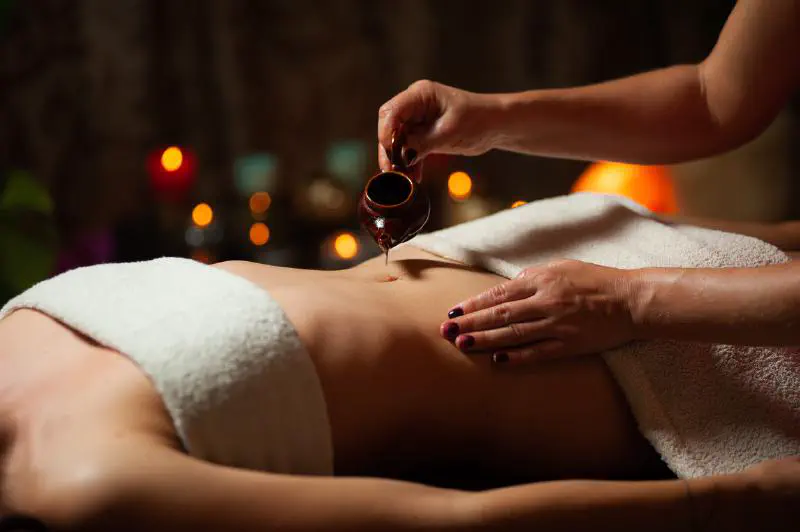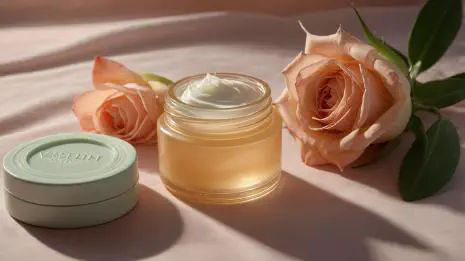Glowing skin is often attributed to health, youth, and vitality, and in the quest for that radiant complexion, many are turning to the vibrant spice called turmeric. Renowned not only as a culinary staple but also as a skincare marvel, turmeric has been used for centuries in traditional medicine to lighten and enhance the skin’s natural glow. Understanding its scientific foundation reveals how turmeric uniquely affects melanin production and aids in reducing hyperpigmentation, all while offering powerful anti-inflammatory and antioxidant benefits.
In this article, we delve into the multifaceted roles turmeric plays in skincare. From its ability to brighten skin through simple do-it-yourself masks and face packs to its infusion in various commercial skincare products, turmeric proves to be a versatile and effective natural remedy. Whether you’re dealing with acne, dark circles, or chronic conditions like eczema, turmeric offers promising assistance when incorporated into your skincare routine.
However, like any skincare ingredient, it’s essential to recognize the potential risks, such as skin sensitivity and allergic reactions, and understand the importance of proper consultation and finding the right concentration for your skin type. Explore the vibrant world of turmeric-infused skincare to enhance your skin’s glow safely and effectively.
The Science Behind Turmeric’s Skin Benefits
Turmeric, a golden-yellow spice, has gained recognition for its impressive skin-enhancing properties. At the heart of these benefits is curcumin, a bioactive compound rich in anti-inflammatory and antioxidant properties. These properties help combat signs of skin aging, such as wrinkles and fine lines, by protecting skin cells from damage caused by free radicals. Additionally, turmeric has been used to reduce pigmentation and treat acne, thanks to its antimicrobial capabilities. Turmeric essential oil, with its concentrated curcumin, amplifies these skin benefits when used correctly. For best results, it should be diluted before application on the skin. Combining turmeric with other skin-enhancing agents like kojic acid can further improve skin tone, fade dark spots, and enhance overall skin brightness.
How Turmeric Affects Melanin Production
Turmeric plays a notable role in reducing excessive melanin production in the skin. Curcumin, the key ingredient, targets areas with excess pigmentation, helping to naturally fade sunspots and acne scars. This allows your skin to achieve a brighter and more even tone without altering its natural color. The antioxidant and anti-inflammatory nature of curcumin further supports skin health by protecting it from damage. Over time, turmeric’s impact on melanin production aids in enhancing a glowing complexion. With regular use in skincare routines, many find their skin appearing brighter and more consistent. This gentle approach helps improve overall skin tone, promoting a healthy and radiant look.
Turmeric’s Role in Reducing Hyperpigmentation
Turmeric has long been celebrated for its ability to brighten skin, making it effective in fading dark spots and hyperpigmentation. The main compound, curcumin, inhibits melanin synthesis, which helps naturally lighten areas of hyperpigmentation. By regularly incorporating turmeric into a skincare routine, individuals may notice a reduction in uneven pigmentation, resulting in a more luminous complexion. Turmeric’s rich antioxidant potential also plays a part in minimizing the appearance of fine lines and hyperpigmentation. Although promising, the results can vary depending on each person’s skin type and reaction to turmeric. Users should note that while it can be beneficial, turmeric’s effects may not be immediate and usually show over time.
Anti-inflammatory and Antioxidant Properties
Turmeric is not just a spice; it’s a powerful ally in soothing inflamed skin conditions like acne and eczema. Its anti-inflammatory properties help decrease redness and swelling, bringing relief to irritated skin. Additionally, turmeric is packed with antioxidants that combat free radicals, thus shielding the skin from oxidative stress and the early signs of aging. Curcumin, turmeric’s active component, is particularly potent in fighting acne vulgaris, offering both a calming and purifying action. This multi-faceted approach to skin health can rejuvenate the skin, enhancing microcirculation and reviving its natural glow. Thanks to these benefits, turmeric strengthens and revitalizes the complexion, leading to healthier, more resilient skin.
DIY Turmeric-Based Remedies for Skin Brightening
Turmeric is known for its skin-brightening properties, which can enhance your natural glow. Using simple ingredients from your kitchen, you can create effective turmeric-based remedies at home. These remedies are easy to prepare and incorporate into your daily skincare routine. From face masks to gel applications, turmeric works wonders for lightening skin tone and fading dark spots. Here, we’ll explore how to make and use different turmeric-based treatments for beautiful, radiant skin.
Turmeric and Honey Mask
The turmeric and honey mask is a wonderful way to hydrate and soothe your skin. It combines the anti-inflammatory power of turmeric with the moisturizing benefits of honey. Simply mix one tablespoon of turmeric powder with two tablespoons of honey. Apply the smooth mixture to your face, leaving it on for 15–20 minutes. Turmeric calms the skin, while honey keeps it radiant by reducing inflammation. Regular use may lead to a hydrated, brighter complexion that looks fresh and youthful.
Yogurt and Turmeric Face Pack
For a gentle exfoliating treatment, try the yogurt and turmeric face pack. This mixture combines the exfoliating lactic acid in yogurt with turmeric’s brightening properties, making it easy to apply. Mix plain yogurt with turmeric powder to form a paste and spread it on your face. Leave it on for about 20 minutes. This helps target pigmentation and dark spots, leaving your skin feeling soft and rejuvenated. With consistent use, your skin may appear clearer and more even-toned.
Aloe Vera and Turmeric Gel
Aloe vera and turmeric gel is perfect for calming sensitive skin and enhancing even skin tone. To make this gel, mix one tablespoon of turmeric powder with three tablespoons of fresh aloe vera gel. Apply the mixture to your face, let it sit for 30 minutes, then rinse off. Aloe vera soothes irritation, while turmeric’s brightening effects promote overall skin health. This combination can help reduce redness and improve skin’s radiance with regular use.
Other Ingredients to Combine with Turmeric
Turmeric can be paired with other powerhouse ingredients for enhanced skin benefits. Kojic acid is a popular addition, improving the fading of dark spots when used with turmeric. Products like Nasola Kojic Acid & Turmeric Bio Oil showcase this effective blend. Argan oil also works well with turmeric, boosting skin restoration and radiance. To protect your skin from sun damage, combine turmeric with sunscreen. This not only protects but also helps reduce sunspots over time. Try using turmeric soap to assess its standalone benefits in improving skin tone. Pair turmeric with moisturizing elements to keep skin healthy as it gets brighter.
Turmeric-Infused Products for Enhanced Skin Health
Turmeric has long been a favored ingredient in skincare for its remarkable properties. Known for reducing dark spots and hyperpigmentation, turmeric helps create an even skin tone by regulating melanin production. This makes it an excellent choice for those looking to brighten their skin. The anti-inflammatory and antiseptic qualities of turmeric make it great for calming conditions like eczema and psoriasis, reducing redness and irritation. When incorporated into a regular skincare routine, turmeric-based products, such as creams, serums, and oils, enhance skin tone and texture. While it doesn’t offer instant results, continuous use promises long-term benefits, including a healthy and radiant complexion.
Benefits of Turmeric Exfoliating Scrubs
Turmeric exfoliating scrubs are packed with benefits that make them a valuable addition to any skincare routine. Thanks to their anti-inflammatory properties, these scrubs help tackle acne and reduce skin inflammation. They also include vitamin C, which enhances skin lightening and promotes an even skin tone. Curcumin, the active compound in turmeric, contributes to the skin-brightening effects by lessening hyperpigmentation and dark spots. Moreover, these scrubs improve skin circulation. This enhanced circulation can reduce puffiness and promote a healthier complexion. By providing moisturizing benefits, turmeric scrubs help hydrate dry skin. The result is a glowing and refreshed appearance that many seek.
The Role of Turmeric Oils in Skincare
Turmeric oils hold a special place in skincare. With a high concentration of curcumin, turmeric essential oil provides significant skincare benefits. Known for keeping blemishes and acne marks at bay, it contributes to radiant and glowing skin. Additionally, turmeric oil acts as a detoxifying agent, making it ideal for acne-prone skin as it promotes a smoother and clearer appearance. Regular use of turmeric oil can be an anti-aging ally. Its antioxidant properties target fine lines and wrinkles, giving skin a youthful boost. Also, turmeric oil’s antibacterial qualities help treat acne, control oil, and reduce the chance of future breakouts.
Turmeric Creams and Lotions
Turmeric creams and lotions are popular for their skin-brightening effects. Turmeric essential oil in lotion form can brighten skin within three weeks, with results lasting about as long. These products owe their power to the antioxidants and soothing properties found in turmeric. Turmeric pads, which combine its brightening effects with other ingredients like kojic acid, further enhance skin lightening. Using a DIY turmeric lotion can lead to a naturally glowing complexion. Moreover, consistent application of turmeric-infused creams aids in reducing dark spots and promoting an even skin tone. The long-term benefits of these creams and lotions make them a staple in effective skincare routines.
Addressing Skin Conditions with Turmeric
Turmeric is a golden spice with rich benefits for the skin. Thanks to its anti-inflammatory, antimicrobial, and antioxidant properties, it can manage many skin issues. Studies indicate that turmeric improves skin conditions such as acne, psoriasis, and eczema. When used regularly, it can reduce dark spots by inhibiting melanin production, leading to a more even skin tone. Turmeric also enhances blood circulation, which helps diminish puffiness and discoloration under the eyes. Its soothing and lightening powers make it a valuable addition to any skincare routine.
Managing Acne Breakouts with Turmeric
Acne breakouts can be distressing, but turmeric offers a natural remedy. Its antibacterial properties help fight acne-causing bacteria, promoting clearer skin. The active component, curcumin, has powerful antioxidant abilities that tackle acne-triggering free radicals. Turmeric also helps balance oil production on the skin, making it suitable for both oily and dry skin types. This balance reduces the chances of clogged pores and acne lesions. Its anti-inflammatory nature further aids in diminishing redness and swelling, allowing faster recovery from breakouts.
Turmeric’s Effect on Dark Circles
Dark circles are a common concern for many. Turmeric can help lighten these circles due to its brightening properties. By improving microcirculation, turmeric reduces the puffiness that often accompanies dark circles. Its anti-inflammatory qualities soothe the skin, enhancing the overall look of the under-eye area. With regular use, turmeric lightens the skin around the eyes, diminishing the appearance of darkness. Integrating turmeric into your skincare routine can result in more vibrant, even-toned skin under the eyes, thanks to its circulation-improving capabilities.
Eczema and Psoriasis Relief
Eczema and psoriasis can cause significant skin discomfort. Turmeric, however, offers relief with its anti-inflammatory and antiseptic qualities. Applying it topically or consuming it can soothe irritated skin and reduce redness. Turmeric is also known to inhibit the activity of PhK, a protein linked with psoriasis, aiding in the management of this condition. Its antioxidant properties help control flare-ups, making turmeric a helpful ally in reducing symptoms. Furthermore, its antimicrobial powers can eliminate bacteria causing psoriasis-related inflammation. Adding turmeric to your skincare routine or diet can provide substantial eczema and psoriasis relief.
Potential Risks and Precautions
Turmeric is often praised for its skin benefits. However, using it requires caution as it can cause adverse skin reactions. Some people may experience swelling, redness, or irritation due to allergies. This makes it essential to test turmeric on a small area of skin before full application. Also, turmeric has low bioavailability—meaning only a small amount is absorbed when used—which can be problematic. Cautious use is vital to prevent more serious reactions. Moreover, if you are on medication, it’s wise to consult a healthcare professional to avoid any harmful interactions. Remember, even though it’s a natural ingredient, everyone’s skin may react differently. Use turmeric carefully.
Skin Sensitivity and Allergic Reactions
Using turmeric on the skin requires care as it might lead to sensitivity and allergic reactions. Irritation, redness, and swelling are possible side effects when turmeric is directly applied without testing. To prevent adverse reactions, perform a patch test. Apply a small amount of turmeric on your forearm and wait 24 to 48 hours to see if irritation develops. Leaving turmeric on the skin for too long can also leave a temporary yellow stain, but this is not permanent and fades over time. Individuals with known allergies to turmeric, especially when ingested, should avoid using it on their skin to prevent negative reactions. Before trying turmeric topically, ensure it’s compatible with your skin by consulting health professionals, particularly if you have existing sensitivities or skin conditions.
Finding the Right Concentration for Your Skin Type
Turmeric can benefit various skin types if used correctly. For normal skin, it helps maintain glow; for oily skin, it controls excess oil, and for dry skin, it provides moisture. If you have sensitive skin, be extra cautious and conduct a patch test to check for any adverse reactions. Consistent application in face masks or serums may bring skin-brightening results after three to four weeks. Despite its benefits, be mindful of turmeric’s low bioavailability and possible medication interactions—thoughtful use is key. The skin-lightening effects of turmeric stem from its antioxidants and soothing properties. These can reduce dark spots and hyperpigmentation, enhancing overall skin tone.
Consultation with Dermatologists
Consulting with dermatologists is advisable before using turmeric on your skin. They recommend a patch test to check for allergic reactions or sensitivities. Regular use, as endorsed by dermatologists, may effectively lighten skin tone over a three to four-week period. While turmeric brings notable skin benefits, dermatologists also advise on exfoliation to remove any potential staining from its use. Turmeric’s antibacterial and anti-inflammatory properties can be particularly beneficial for treating acne and inflammatory skin conditions. Some studies suggest that turmeric essential oil in lotions can brighten the skin within three weeks. Engaging with a dermatologist ensures you are using turmeric safely and effectively to enhance your skincare routine.
Practical Tips for Incorporating Turmeric into Skincare
Turmeric is more than a spice; it can be a skincare powerhouse. It helps lighten dark spots, balances skin tone, and reduces hyperpigmentation. Thanks to its melanin-inhibiting properties, turmeric can make your skin look brighter over time. Use it regularly for three to four weeks to see significant changes in your complexion. Turmeric also offers anti-inflammatory and antioxidant benefits, which help soothe irritation and fight off free radicals. Incorporate turmeric as a natural boost to your skincare routine for softer, more hydrated, and luminous skin.
Choosing Quality Turmeric for Skincare
The quality of turmeric you choose matters in skincare. Look for products rich in curcumin. This active compound is key to reducing melanin production and evening out skin tone. High-quality turmeric works well against dark spots and acne. It’s even better when combined with ingredients like kojic acid, which enhance its brightening effects. Make sure your turmeric products have antioxidants to combat wrinkles and maintain skin moisture. Consistent use of quality turmeric can offer brightening results while keeping your skin nourished and bright.
Frequency and Application Techniques
To effectively lighten your skin tone, use turmeric consistently over three to four weeks. It works best as a mask or serum, targeting dark spots and hyperpigmentation. Apply turmeric masks for a short duration, usually between 5 to 7 minutes, before washing them off with lukewarm water. Mixing turmeric with milk in your masks can boost its moisturizing effects, ideal for dry skin. For glowing, hydrated skin, consider using turmeric-based facial treatments once or twice a week. With routine application, your skin can achieve a noticeable improvement in hydration and glow.
Monitoring Results and Adjusting Routine
Keeping track of your turmeric application can help you achieve your desired skin brightening results. Pay attention to how your skin responds and make any necessary changes to enhance its glow. A 2017 study suggests that turmeric can start showing visible results within three weeks, serving as a guide for any needed tweaks. Observe changes in your skin’s tone and vibrancy to fine-tune your routine. Monitoring how your skin reacts allows you to adjust timing and mixing techniques, maximizing turmeric’s natural benefits for skin brightness.







